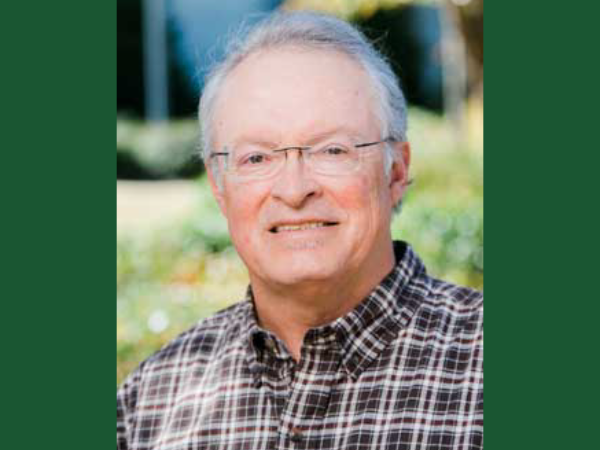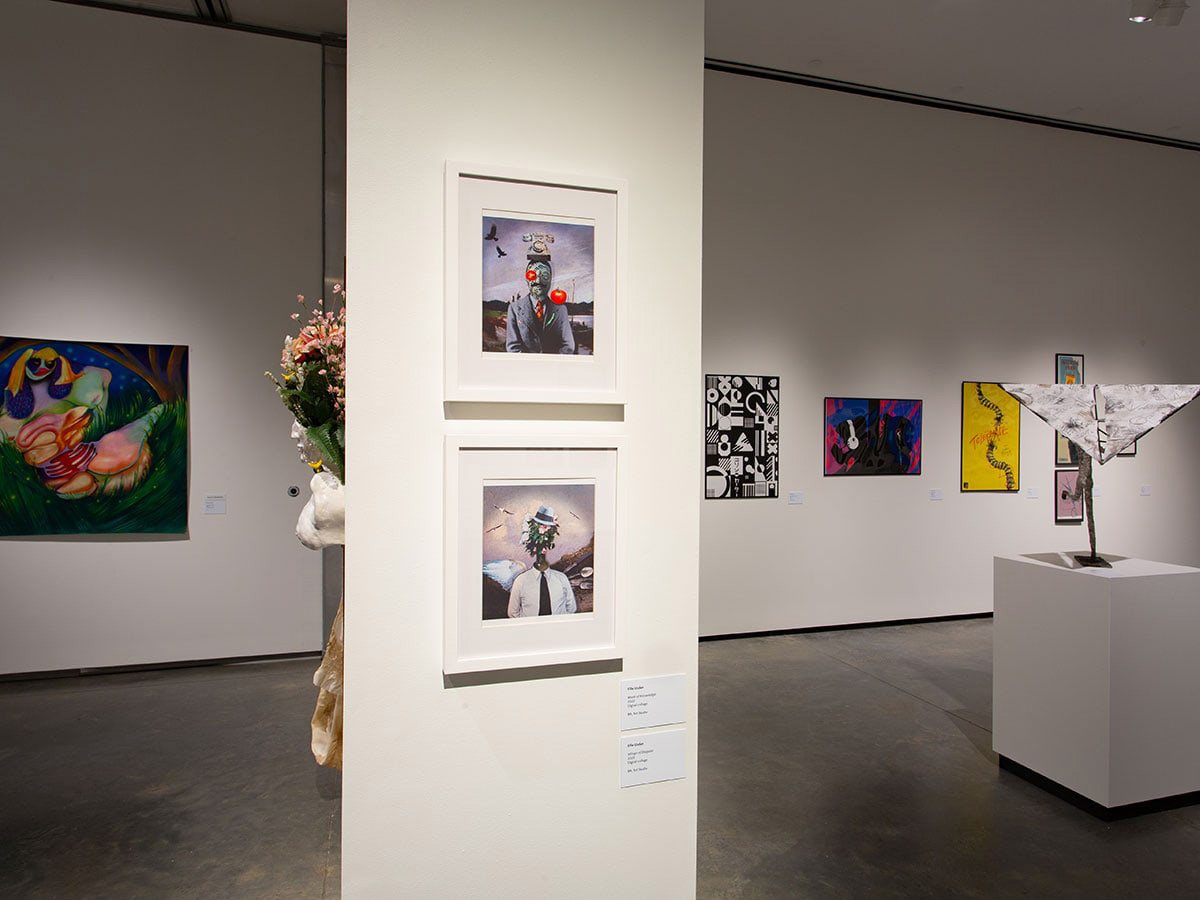“This is your brain on drugs.”
Perhaps no other analogy has done as much to illustrate brain function as the now-famous 1987 public service announcement aimed at reducing narcotics use. But Dr. Rajesh Kana, associate professor in the Department of Psychology and Director of the Cognition, Brain and Autism Laboratory at the Civitan International Research Center (CIRC), has a few metaphors of his own that explain how the brains of austistic people work.“When I give talks, I often tell people to think about airports,” he says. “Our research findings indicate that so much about Autism Spectrum Disorder is about the quality of the connections between different regions of the brain. For example, it’s easy to get from Birmingham to Atlanta, Memphis, or Nashville. But it’s harder to get from Birmingham to Amsterdam. So, the local connectivity of the Birmingham Airport is pretty good; whereas its long-distance connectivity is rather poor. In the same way, those long connections in the brain, from the visual cortex in the back of the brain to the front of the brain, can be easily disrupted in people with ASD.”

“You can also think about the strength of those connections,” he continues.
“You don’t want a connection that is too high with too many signals, or one that is too low with too little input. It’s like your mobile phone,” he says. “If the connection is too weak, then you won’t be able to receive calls. It has to be optimum. For people with ASD, their connections may be too high, or too low, resulting in disrupted connectivity.”
Collecting Images
Dr. Kana, who came to UAB from Carnegie-Mellon University, Pittsburgh, was one of only a handful of neuroimaging researchers on campus when he arrived nine years ago. He was drawn to UAB for several reasons, including the opportunity to work with children with developmental disabilities, the interdisciplinary opportunities that were available between the Psychology department and the School of Medicine, the commitment to autism research by then-Civitan director Dr. Harry Sontheimer, and the availability of MRI scanners that could advance his research.Within a short six months his operation was up and running, and within a few years, several other researchers working in neuroimaging had joined UAB. “I think there were three or four of us when I started, and today there are 20 or more,” Kana says.
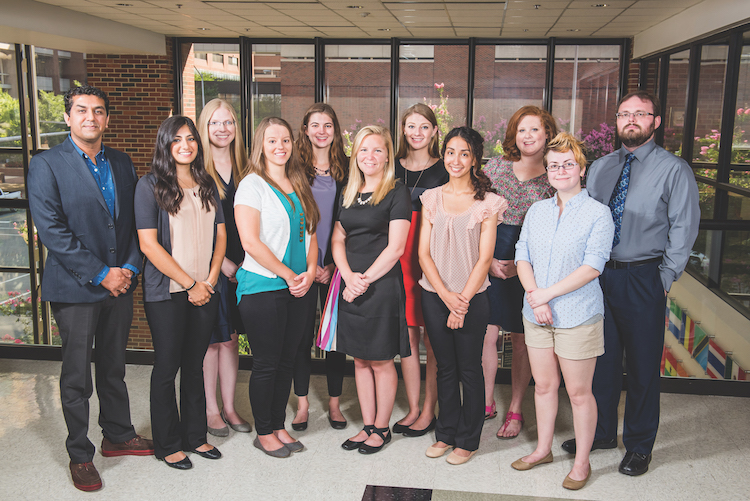 Dr. Kana with his students. Front row, from left: Carla Ammons, Abbey Herringshaw, Haley Bednarz, Melissa Thye, Emma Sartin, Thomas DeRamus. Mary-Elizabeth Winslett, Niharika Loomba, Victoria Seghatol-Eslami, Rebecca DonnellyKana’s approach is to see the brain as a whole. “We’re looking at signatures, at those connections,” he says. “Traditionally, researchers in the field were looking for focal, isolated neural stamps or flags that one could identify as causes of autism. But there’s never been a consistent or clear focal marker. By focusing on parts, one may be addressing only half the story. We want to see parts as well as how the whole brain working together as a team—the crosstalk between regions and how those regions influence each other.”
Dr. Kana with his students. Front row, from left: Carla Ammons, Abbey Herringshaw, Haley Bednarz, Melissa Thye, Emma Sartin, Thomas DeRamus. Mary-Elizabeth Winslett, Niharika Loomba, Victoria Seghatol-Eslami, Rebecca DonnellyKana’s approach is to see the brain as a whole. “We’re looking at signatures, at those connections,” he says. “Traditionally, researchers in the field were looking for focal, isolated neural stamps or flags that one could identify as causes of autism. But there’s never been a consistent or clear focal marker. By focusing on parts, one may be addressing only half the story. We want to see parts as well as how the whole brain working together as a team—the crosstalk between regions and how those regions influence each other.”Kana looks at a few key areas in people who are on the higher end of the autism spectrum: the function of the brain, particularly during a social tasks such as mindreading; the brain’s mass, including the thickness and volume of the cortex; the white matter of the brain measured using diffusion tensor imaging (DTI); and the chemical composition of the brain, as measured by magnetic resonance spectroscopy (MRS).
“For example, one way we measure the brain’s function—its connectivity and activity—is to ask children to infer emotion based on language or a scene from a movie clip,” he explains. “We will put them into a scanner and then show them a movie clip and ask them to tell us what the characters are feeling based on facial expressions and body language. Or we will run tests that challenge them to detect absurdity in language by giving them a series of sentences such as, ‘It is freezing cold outside. It may be a good idea to not wear a jacket while going out.’ Typically ASD individuals have a difficult time identifying those absurdities.”
Dr. Kana and his graduate students have collected a large database of about 150 children and adults with autism whom they’ve scanned. In two studies that he and his team have published, they used a computer algorithm to analyze the data. “We apply our findings to a technique called machine learning,” he says. “We taught the computer certain algorithms to see features in a data set, and the computer then classified participants into groups based on key attributes, such as brain connectivity patterns or cortical thickness patterns. We found that the computer could classify data from participants with autism from that of typical controls with about 95-96% accuracy,” he says.
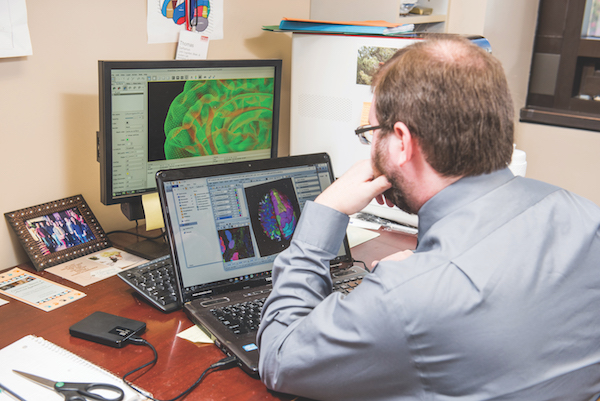
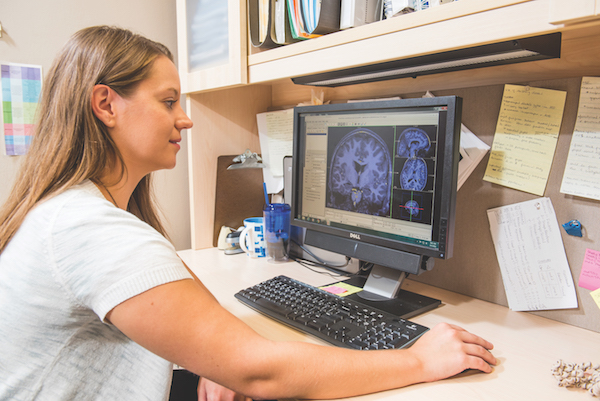
Developing Interventions
Autism researchers in the Department of PsychologyDr. Frank Amthor, Professor • Interim Director, Behavioral Neuroscience Graduate Program • Research interests: neural computation, retinal physiology Dr. Fred Biasini, Associate Professor • Director, Lifespan Developmental Psychology Program • Research and teaching interests: ASD, effects of parent-infant interaction on development, social development, children of substance abusers Dr. Kristi Guest, Assistant Professor • Disabilities Services Coordinator for UAB Head Start Program • Research Coordinator for UAB Civitan-Sparks Clinics and UAB Leadership Education in Neurodevelopmental and Related Disabilities (LEND) • Research interests: ASD, developmental psychology, infant and child development Dr. Maria Hopkins, Associate Professor • Director of Undergraduate Studies in Psychology • Research interests: ASD, social-emotional development in children Dr. Rajesh Kana, Associate Professor • Co-Director, Undergraduate Neuroscience Program • Director, Cognition, Brain, and Autism Laboratory • Research interests: social, cognitive and affective neuroscience, neuroimaging, autism spectrum disorders, brain and language Dr. Sarah O’Kelley, Assistant Professor • Director, ASD Clinic at UAB Civitan-Sparks Clinics • Training Director, UAB LEND • Research and teaching interests: cognitive and behavioral phenotypes of children and adults with ASD, ASD screening and interdisciplinary diagnosis and treatment outcomes Dr. Laura Stoppelbein, Associate Professor • Research interests: stress and coping among children, adolescents and families; stress and anxiety among ASD-diagnosed children |
“We already know that clinicians and educators can use their intervention and instruction to address these connectivity problems,” he says. “For example, reading comprehension can be a challenge for many people with ASD. They can read the words very quickly, but they may not understand the meaning of the passage they just completed. In one of our recent studies, we brought participants from across the country to UAB to participate in our MRI scans. Then they went back home to participate in an intense training program called Visualizing and Verbalizing for Language Comprehension and Thinking, which includes 200 hours of face-to-face intervention on reading comprehension. For example, here in Birmingham, participants work with the Lindamood Bell Learning Processes Center to complete the program. After those 200 hours of training, they come back and we scan them again, and we can see changes in the brain in terms of activity and connectivity after the second scan.”
Building a Team
Kana’s lab also has close collaboration with Auburn University MRI center. This is facilitated by a statewide collaborative initiative called the Alabama Advanced Imaging Consortium (AAIC) that connects Auburn and UAB, and other major research centers across the state. Co-directed by Dr. Thomas S. Denney, Jr., professor of Electrical and Computer Engineering at Auburn University, and Dr. Adrienne Lahti, the Patrick H. Linton Professor in the UAB Department of Psychiatry, the consortium provides project management and support among scientists and enables them to share equipment. Dr. Kana has access to the Auburn MRI Research Center and its Siemens 7T MRI machine and Siemens Verio Open-Bore 3T scanner; Auburn scientists in turn have access to UAB’s Siemens Prisma 3T MRI scanner. “That is a very important partnership for us,” he says. “We can reach out to the larger neuroimaging community and ask deeper and broader research questions as expertise is always available at one center or another.”Dr. Kana also has several Ph.D. students and three undergraduate neuroscience majors in his lab. “We have a lot of interest from students in what we’re doing,” he says. “We’re the only active lab at UAB doing neuroimaging research for autism spectrum disorders.”
He also notes that a number of his recent graduates have gone on to secure high-level jobs at prestigious labs and institutions. Dr. Lauren Libero was the first author on a paper published last March in the journal “Cortex” that outlined the group’s multimodal approach. She is now a post-doctoral scholar at the University of California-Davis MIND Institute (Medical Investigation of Neurodevelopmental Disorders). “That is an excellent center for autism research and Lauren is on the right tracks for a promising career,” Kana says.
He adds that Dr. Amy Lemelman, who graduated recently, is now working in the lab of Dr. Catherine Lord, the director of the Institute for Brain Development at New York-Presbyterian Hospital, Weill Cornell Medical College and Columbia University Medical Center. Dr. Lord is renowned in the field of autism research and developed the tools that clinicians use to diagnose autism.
And Dr. Donna Murdaugh, who graduated last year from Dr. Kana’s lab, is now doing a two-year postdoctoral fellowship in pediatric clinical neuropsychology through the Emory University School of Medicine Postdoctoral Fellowship Program in Professional Psychology. Another graduate, Dr. Heather Wadsworth is a clinical psychologist at the Glenwood Foundation for Autism in Birmingham.
Kana has two pending papers on the language intervention studies that will be published as soon as they finish the peer-review process. And he continues to scan the brains of participants to find new ways to understand, diagnose and treat autism. “We have excellent graduate and undergraduate students and hence the lab has been very productive,” he says. “Our work just rolls on. Our long-term goal is to expand the lab to a larger center for autism where research, clinical, and educational activities can be converged. We need all levels of support for achieving this.”
Local high school student raises funds for Dr. Kana’s lab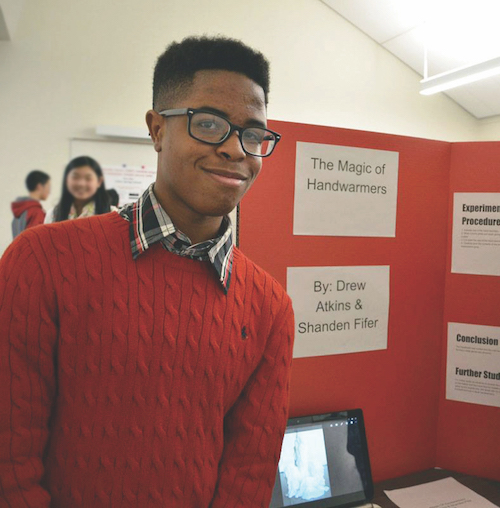 Shanden Fifer, a student at Indian Springs School in Birmingham, learned about Dr. Kana’s work and was motivated to embark on a fundraising project to support him. We asked him a few questions about his experience and his passion for autism research at UAB. Shanden Fifer, a student at Indian Springs School in Birmingham, learned about Dr. Kana’s work and was motivated to embark on a fundraising project to support him. We asked him a few questions about his experience and his passion for autism research at UAB.1. How did you learn about Dr. Kana’s Autism Research Lab? My initial connection with Dr. Kana and his research was when my grandmother responded to an autism research study advertised in The UAB Reporter. My brother has autism and participated in Dr. Kana’s study. 2. Why did you choose to raise funds and awareness for Dr. Kana’s Autism Research Lab? As an eighth grader at Highlands School, I completed a yearlong capstone project. My primary focus was on autism awareness. I decided to interview 10 autism researchers to try to learn more, and Dr. Kana was one of them. Through my research, I also learned that autism research is not funded as much as some other diseases, so I wanted to help. In my final report, I indicated that my objectives were to continue to raise community awareness about autism and to conduct a two-year fundraiser to help support some facet of autism research. • Year One - Donated $1,190 to the Autism Society of Alabama. I also presented my comprehensive report at Highlands School and I developed a web page and flier that were made available to the community. • Year Two - Raised $1,135 to support Dr. Rajesh Kana, Autism Research Lab, UAB Department of Psychology. I also presented an autism presentation to the Irondale City Council, and they made a very generous contribution of blue light bulbs to light up the community for National Autism Awareness Month. 3. What do you hope will come of his research? I have been acquainted with Dr. Kana for more than seven years. He is very passionate about his work. Each time I see him, he is excited about an autism research project that is in the works. I am convinced that one day he or someone else in the autism research field will solve the puzzle about autism. A breakthrough will come… a breakthrough that will help my brother and many others. |
